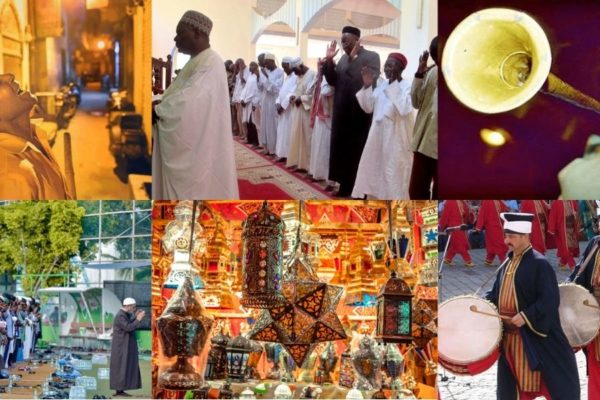As the most populous Muslim-majority country in the world celebrates the 77th anniversary of its proclamation of independence from Dutch colonial rule, our author honors this day in a slightly different manner: by paying tribute to Indonesia’s national language.
As the most populous Muslim-majority country in the world celebrates the 77th anniversary of its proclamation of independence from Dutch colonial rule, our author honors this day in a slightly different manner: by paying tribute to Indonesia’s national language.
You don’t have to be a linguistics scholar to know that language is a powerful tool that goes beyond the basic act of communication. It is part and parcel of cultural identity, and particularly in the context of colonialism and postcolonialism, depending on which side of unequal and exploitive power relations you stand on, it can be everything from threat to ill-gotten power that needs to be neutralised in order to exert one’s domination over others to being the catalyst of independence movements.
Just think of Canada’s heinous residential school system that for 150 years up until the 1970s sought to destroy the Indigeneity of the original custodians of Turtle Island (the name for North America used by Indigenous peoples and their allies in Canada and the US) by violently forcing their children to speak the European coloniser’s languages (English and French) and to unlearn their own ones.
More currently, think about the Israeli apartheid regime’s continuous erasure of Palestinian culture, for example by changing Arabic street names to Hebrew ones in occupied East Jerusalem and via its efforts to legally downgrade Arabic by establishing Hebrew as the sole official language of the settler colonial state.
And just as the Bengali Language Movement was the initial spark that would ultimately ignite the flame of the Bangladeshi Liberation War against Pakistan (which, by trying to establish Urdu as the sole national language, did seven decades ago what Israel is doing now, and gloriously failed), the propagation of Bahasa Indonesia as the language of national unity by independence leaders was crucial to the success of ending Dutch colonial rule in the archipelago.
Same same, but different
I, who first came into contact with Bahasa Indonesia during a longer sojourn in Jakarta as part of a post-high-school Southeast-Asia-on-a-shoestring backpacking trip and instantly fell in love with city, country, and people, subsequently spending years self-studying the language (which enabled me to phone in my Asian language requirement in my Asian and African studies bachelor program years later), invite you, dear reader, to discover what can only be described as an autodidact’s dream, given that Bahasa Indonesia, a variety of standardised Malay, is a language that at first glance cannot be bothered with tenses, grammatical genders, articles (both of the indefinite and definite persuasion), or even plural endings.
But this does not mean that Bahasa Indonesia is a stunted language. On the contrary: it is highly animated, vivid in imagery, and its overall simplicity should not be confused with simplemindedness. Like Filipino food, the Indonesian language is much more sophisticated and nuanced than it is given credit for, once one sets aside one’s biases and dares to delve deeper into the subject matter.
But hold on, you say: if the concept of tenses is alien to Bahasa Indonesia, how would an Indonesian tell another about the delectable fried chicken and white rice they ate the day before? In Western languages such as English, French and German, where there are not only past, present, and future tenses, but also a past tense of a past tense (the plusquamperfect, a harsh rebuttal of the saying “the past is the past”) and even a past tense within a future tense?! (a.k.a the future perfect), it would go something like this: “Yesterday I ate fried chicken with white rice.” Or, if the act of eating were to happen later in the day, one would relay one’s intentions by saying: “Today I’m going to eat fried chicken with white rice.”
In minimalist “Bahasa” (my Indonesian-born and German-bred language teacher at university always hated it when us learners did like the locals of her homeland and shortened the name of the language she taught to students too dumb and lazy for Thai or Mon: “Bahasa means language!” she would call out, shaking her head in frustration and visibly questioning her life choices), both sentences would go like this: “Kemarin, saya makan ayam goreng dengan nasi putih” (literally: Yesterday I eat chicken fried with rice white) and “Hari ini, saya makan ayam goreng dengan nasi putih“ (Day this, I eat chicken fried with rice white).
Well, whaddaya know: Same same, but different. Easy peasy, lemon squeezy. Sometimes less is more. Just the basics without any redundant flourishes.
Here is another grammatical delicacy of Michelin-like linguistic haute-cuisine-simplicity and almost mathematical precision: the Indonesian equivalent of a sentence like “This food is delicious!” would be, in true devotion to the Gods of Clarity and Laconism that keep vigil over a multiethnic state’s egalitarian lingua franca designed to not privilege one ethnic group over the other (unlike Urdu in Pakistan or French in Cameroon), “Makanan ini enak!” (Food this delicious).
“Food this delicious” might sound cavemanish to the Anglophone ear, and if anyone were to talk like that in North America, the British Isles, Australia, and New Zealand, they would instantly be inundated with racist ridicule and vitriol (“Learn some f*****g English!” Whitey would say, their English all too often more substandard than that of the people they colonised). But Indonesians make it work.
And FYI: from a linguistic standpoint, there is absolutely nothing wrong with a sentence like “Food this delicious.” Contrasted with its Indonesian version, this example illustrates quite well that “correct” language has more to do with social acceptability as defined by a hegemon than with moral categories of right or wrong.
A kingdom for an acronym
Any non-native speaker of Bahasa Indonesia who has had the dubious pleasure of trying to read an Indonesian newspaper will have noticed one thing: Indonesians love acronyms. And trying to read even a short Kompas or Media Indonesia news article is a Herculean exercise akin to cryptanalysing Nazi Germany’s Enigma ciphering system.
The 1998 edition of the Kamus Indonesia Jerman (Indonesian-German Dictionary) which students of Humboldt University Berlin, a “university of excellence” as approved by Germany’s federal and state governments, were still using at the university’s Institut für Asien- und Afrikawissenschaften (IAAW, a would-be SOAS) as recently as 2018 when I left my alma mater, and which was authored by one Adolf Heuken (this gave rise to a long-running joke in our class that Adolf Hitler, instead of offing himself in his Berlin bunker, was comfortably hiding away in plain sight on the other side of the world where he, after having failed in both the arts and genocide, had found his true calling in penning lexicographical reference books in a foreign language for his fellow German-speakers, his choice of assumed name indicating that a part of him clearly was trying to get caught), includes an A-Y addendum of 12 pages listing all the acronyms known to Adolf (apparently, there were no acronyms in Indonesian at the time of publication beginning with the letter Z).
Here are some examples of everyday acronymism: The national police force of the Republic of Indonesia is shortened to Polri (Kepolisian Republik Indonesia), the Menteri Luar Negri (Foreign Minister) is a Menlu, the Greater Jakarta area is called Jabodetabek, comprising the first letters of the cities and regencies Jakarta, Bogor, Depok, Tangerang, and Bekasi.
If you think this is the pinnacle of a people’s addiction to acronyms, take a gander northwards to the Philippines and its national languages of Filipino (the standardised version of Tagalog, like Malay and Bahasa Indonesia, a member of the Austronesian language family which, from the geographical point of view of Nusantara, the pet name for Indonesia, stretches as far as Madagascar to the West and Hawaii to the East) and the more common Taglish (“Hindi kó ma-understand ang topic ng lecture niya.” = I don’t understand the topic of this lecture). Their lexicons include a word like the difficult-to-pronounce and weird-looking (at least to the unaccustomed, culturally arrogant, and judgemental Western eye, mouth, and mind) “SOCCSKSARGEN”, the name of a region on the Southern island of Mindanao which is shorthand for four provinces and two cities: South Cotabato, Cotabato City, North Cotaboto, Sultan Kuderat, Sarangani and General Santos City).
Heck, if an acronym like LGBTQIA2S (Lesbian, Gay, Bisexual, Transgender, Queer and/or Questioning, Intersex, Asexual, and Two-Spirit can successfully enter the lexicon of progressive American English, maybe acronym-loving Indonesians do not need Westerners holding interventions for them and directing them to the nearest AA meeting (Acronymics Anonymous). So let them shorten their Timur Tengah (Middle East) to Timteng, their Sumatra Selatan (South Sumatra) to Sumsel, and let them pluralise their nouns simply by doubling the word in question (orang = person, orang-orang = people, ingenious in its simplicity, if you ask me). Who are we to judge!
Paint me a word picture
Bahasa Indonesia is not only an efficient language, but also an incredibly metaphorical one, downright poetic and playful. Take the word “matahari” for instance: no, I don’t mean the famous Dutch exotic dancer turned Nazi spy, but that giant ball in the sky that makes you sweat, tan, and nowadays gives you skin cancer. Yes, I am talking about the sun, which in Indonesian consists of two words: “mata” (eye) and “hari” (day). And what is the sun but the eye of the day?
What about the moon you ask? Its Indonesian counterpart is “bulan.” Isn’t that the word for “month”, those who have eaten, prayed, and loved in Bali might ask? That’s right, dear orientalising Watsons: the word for “moon” and “month” is the same one in Indonesian because, as we all know, the moon takes just under one month to complete its eight-step cycle from new moon to full moon and back.
For the sake of completeness: stars are called “bintang”, not to be confused with “binatang”, which means animals. There is a plethora of metaphorical compound words in the vocabulary of the Indonesian language: from “kereta api” (wagon of fire, a.k.a. a train) and “air mata” (water of the eye, a.k.a. tears) to the empowering “kupu-kupu malam” (butterfly of the night, a.k.a. a prostitute), the imaginativeness of Bahasa Indonesia knows no bounds.
And don’t forget that the English word orangutan, that critically endangered great ape native to the rainforests of Indonesia and Malaysia who is still on the IUCN Red List (full name: the International Union for Conservation of Nature Red List of Threatened Species), is directly derived from the Malay words “orang” and “hutan” (forest), ergo: a person of the forest. If creationists in the abortion-hating American Bible Belt needed any more proof that forest-dwelling apes are the closest living relatives to humans, the etymology of the word orangutan is it (incidentally, a 2009 study published in the Journal of Biogeography concluded that orangutans, not chimpanzees, were our closest relative, the findings based on physical instead of genetic similarities).
Selamat Hari Kemerdekaan!
The kitchen sink linguist residing within me could further elaborate on the idiosyncracies and fun facts relating to Bahasa Indonesia, lingua franca of an island nation that stretches from Aceh in the West to Ambon in the East and further afield into Indonesian-administered Papua.
I myself had a good fortune many years ago to travel from as far West as Medan, the capital of North Sumatra, all the way to the island of Sumbawa in the East on a two-month backpacking tour with a newly found travel buddy turned brother from another mother from Osaka, Japan whose limited English and my even more limited Japanese did not hinder us from experiencing an adventurous cross-country journey by bus, boat, train, ship, long-distance taxi and even on foot that Barney Stinson, the Ambassador of Awesomeness, would indubitably deem “legendary.”
And during this trip, and many others that would follow, I learned much about Indonesia: about its glorious anticolonial and postcolonial history, eventually hijacked by a US-sponsored (who else?) military coup that would lead to an anti-Communist mass orgy of organised violence, killing a million innocent civilians; its mouth-watering cuisine; its under-appreciated literature by the likes of Pramoedya Ananta Toer and Mochtar Lubis (his “Twilight in Jakarta” being the first Indonesian novel to be translated into English); its vibrant music scene, populated by bands such as Padi and Dewa, Caffeine and Peter Pan, whose iconic song lyrics from the early 2000s I still know by heart after all these years.
And last, but not least, its beautiful language, my personal gateway to what we in Germany call “Land und Leute”, the land and its people. A language that I was once so proficient in and so comfortable speaking that one time, while in Yogyakarta talking long-distance on the phone to Germany with my Bengali mother, I realised that I was answering her Bangla questions in Bahasa.
On that note, I say to all Indonesians in “Tanah Air” (the Fatherland), to the industrious Pekerjan Migran Indonesia (Indonesian migrant workers) employed at minimum wage or even less in higher-income Asian countries such as Malaysia, Singapore, and Hong Kong and in the hyper-affluent Gulf monarchies, and to the members of the Indonesian diaspora communities of the West, from Amsterdam to Australia: Selamat Hari Kemerdekaan, teman-temanku! Happy Independence Day, my friends!





